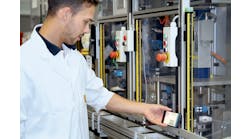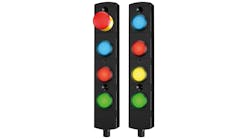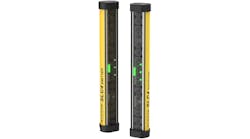Why this article is important
- Presence sensing is increasingly important for both operational efficiency and functional safety in manufacturing environments, especially with the rise of cobots and human-robot collaboration.
- The article details various presence-sensing technologies, such as safety mats, light curtains, laser scanners and radar, specifically applicable to safeguarding human operators around industrial machinery.
- It emphasizes the critical process of risk assessment in determining the appropriate presence-sensing device and the corresponding machine-safety response for each operational step.
- Understanding these technologies and their applications is crucial for controls engineers to design and implement safe and effective automation systems that comply with functional safety standards.
Manufacturing is wrought with safety devices. As we progress further along with cobots and mixing humans and automation together, presence sensing becomes more important, not only for operations, but for functional safety.
Good automation works when we know where the people are and we know where the “things” are, and then we keep the things and the people from colliding in a non-safe arena.
Presence-sensing devices are used to sense the presence of people in the operating area, for the purpose of telling the automation to stop or wait or slow down. The purpose of presence sensing in safety is to reduce the risk of injury.
Manufacturers use a variety of instruments to sense presence. Three main human presence-sensing devices are safety mats, laser scanners and radar devices.
If you are sensing where a thing is, then you may use inductive proximity sensors, capacitive proximity sensors, photoelectric sensors, diffuse photoelectric sensors, through-beam sensors, lasers, fiber optics and ultrasonics. Of course, the simple limit switch is also still in play. The purpose of presence sensing is to track the people and the things, but let’s focus on sensing the presence of people.
When designing an operating area, it’s important to decide on the operation steps and then determine the risks for each step. This allows the engineer to choose the device required for determining presence and then the machine response required to adhere to functional safety standards.
Safety mats
When is a safety mat a good option to use? Mats are good applications when the operator is standing in front of a press that could crush their arms if it moves while the machine is being loaded. Safety mats are susceptible to damage when people are walking on the wires or they get shoved around.
Next steps
- Research specific functional safety standards relevant to your industry and the types of machinery you build.
- Analyze the safety requirements of current or upcoming machine designs, identifying potential hazards and areas where improved presence sensing could mitigate risks.
- Investigate the technical specifications and costs of the different presence-sensing technologies—mats, light curtains, laser scanners and radar, for example—from various manufacturers.
- Explore training resources or application notes for the more complex presence-sensing devices like laser scanners and radar to understand their programming and integration with control systems.





